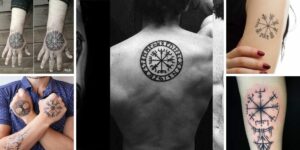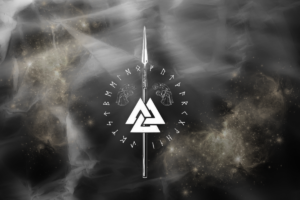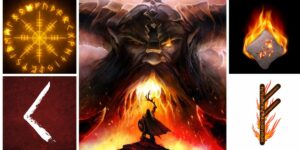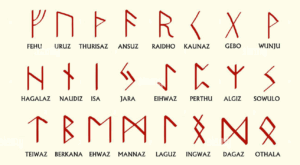Ancient Norse runes are more than just an alphabet—they are a fascinating window into Viking culture, mythology, and spirituality. Used from the 1st century AD onwards, these enigmatic symbols served both as a practical writing system and as powerful magical tools. The ancient Norse runes (also known as the ancient Nordic alphabet or Old Norse rune alphabet) were deeply embedded in the lives of the Vikings, appearing on weapons, runestones, and amulets.
This guide explores the origins, types, meanings, and modern relevance of ancient Nordic runes, offering insights into their historical and mystical significance. Whether you’re a history enthusiast, a spiritual seeker, or simply curious about Viking heritage, this article will illuminate the enduring legacy of the runic script.
I. The Origins of Ancient Norse Runes
Historical Context
The earliest runic inscriptions date back to the 1st–2nd century AD among Germanic tribes, likely influenced by Old Italic or Latin scripts. The ancient Norse alphabet evolved into a distinct writing system, spreading across Scandinavia and Northern Europe.
Mythological Significance
According to Norse mythology, the god Odin discovered the runes through a great sacrifice. In the Poetic Edda (Hávamál), he hung himself from Yggdrasil (the World Tree) for nine nights to gain reginkunnr (divine knowledge). This myth underscores the sacred nature of runes in Viking belief.
Cultural Role
Runes were more than letters—they were used for:
-
Communication (carved on wood, stone, and metal).
-
Magic (spells, curses, and blessings).
-
Memorials (runestones honouring the dead).
II. Types of Runic Alphabets
1. Elder Futhark (2nd–8th Century)
The oldest runic script, the Elder Futhark, consists of 24 characters divided into three groups (ættir). It was used for Proto-Norse and appears on artifacts like the Kylver Stone.
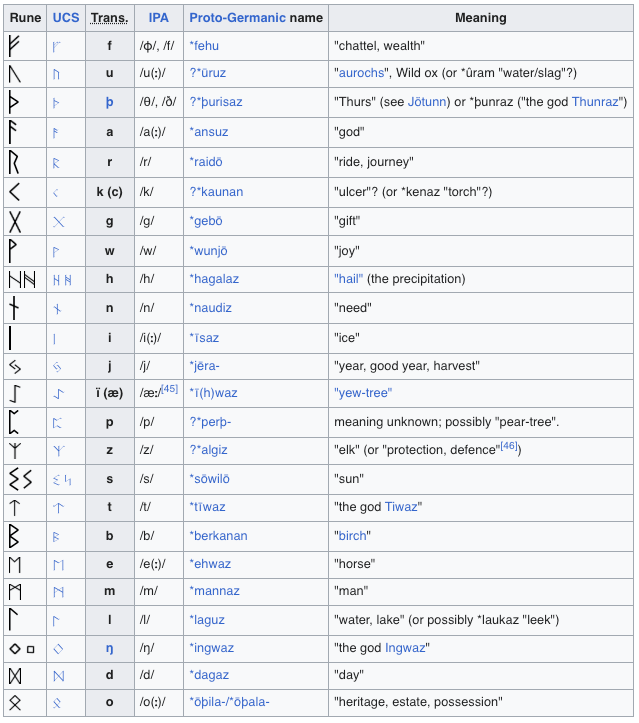
2. Younger Futhark (8th–12th Century)

As Old Norse developed, the alphabet simplified into the Younger Futhark, with only 16 runes. This was the primary script during the Viking Age, with regional variations:
-
Danish (long-branch runes).
-
Norwegian-Swedish (short-twig runes).
3. Anglo-Saxon Futhorc (5th–11th Century)
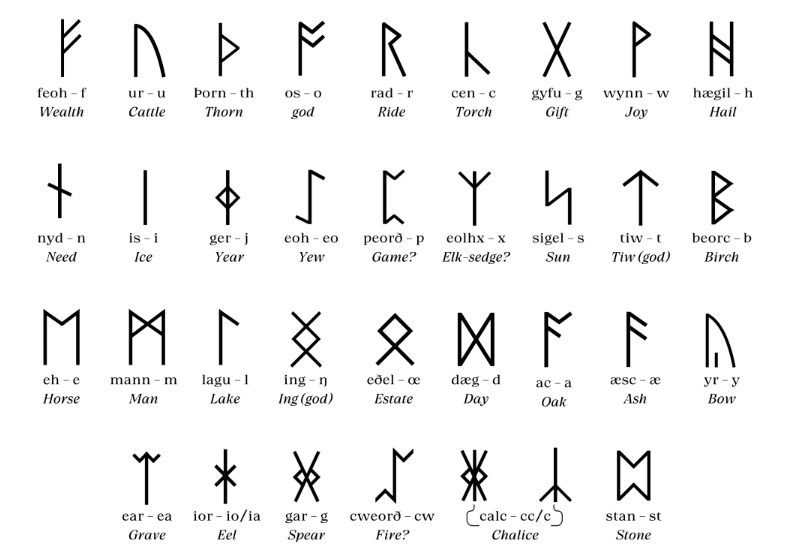
Used in England, the Anglo-Saxon Futhorc expanded to 28–33 runes to accommodate Old English sounds.
III. Structure and Characteristics of Runes
Design Features
-
Angular shapes (easy to carve into wood and stone).
-
Avoided horizontal strokes (to prevent wood splitting).
Phonetic Nature
Runes represent sounds, not exact letters. For example, the same rune could stand for multiple related sounds.
Writing Practices
-
Written left-to-right or right-to-left.
-
Words separated by dots or colons.
IV. Mystical and Practical Uses of Runes
Magical Significance
-
Protection spells (carved on amulets).
-
Divination (casting runes for guidance).
-
Curses and blessings (inscribed on weapons).
Practical Applications
-
Runestones (e.g., the Noleby Runestone: “I prepare the suitable divine rune”).
-
Ownership marks (on tools and weapons).
V. Runes in Norse Mythology and Culture
Odin’s Sacrifice
Odin’s quest for runic wisdom (Hávamál) highlights their sacred status.
Connection to Fate
The Norns (goddesses of destiny) carved runes into Yggdrasil, shaping fate.
Cultural Legacy
Runes embody Viking values—wisdom, courage, and connection to the divine.
VI. Modern Relevance of Ancient Norse Runes
Popular Culture
-
Featured in films, books, and video games (The Elder Scrolls, Vikings).
-
Used in Neopaganism and divination.
Academic Study
Runology deciphers ancient inscriptions, revealing Viking history.
Tattoos and Art
Many choose runic tattoos—always verify translations (use Younger Futhark for authenticity).
VII. Tips for Exploring Runes Today
Learning Runes
-
Start with Elder Futhark (simpler structure).
-
Progress to Younger Futhark (Viking-era accuracy).
Using Runes
-
Transcribe phonetically (match sounds, not modern spelling).
-
Study Old Norse pronunciation.
Resources
- Books: Runes: A Handbook by Michael P. Barnes.
- Websites: Omniglot, Old Norse for Beginners.
Conclusion
The ancient Norse runes are a profound link to Viking heritage—both as a writing system and a mystical tradition. From Odin’s sacrifice to modern tattoos, their legacy endures. Whether you study them academically or use them creatively, understanding the Old Norse rune alphabet deepens appreciation for Norse culture.
Ready to explore runes? Start with the Elder Futhark, dive into history, and let these ancient symbols inspire you!


